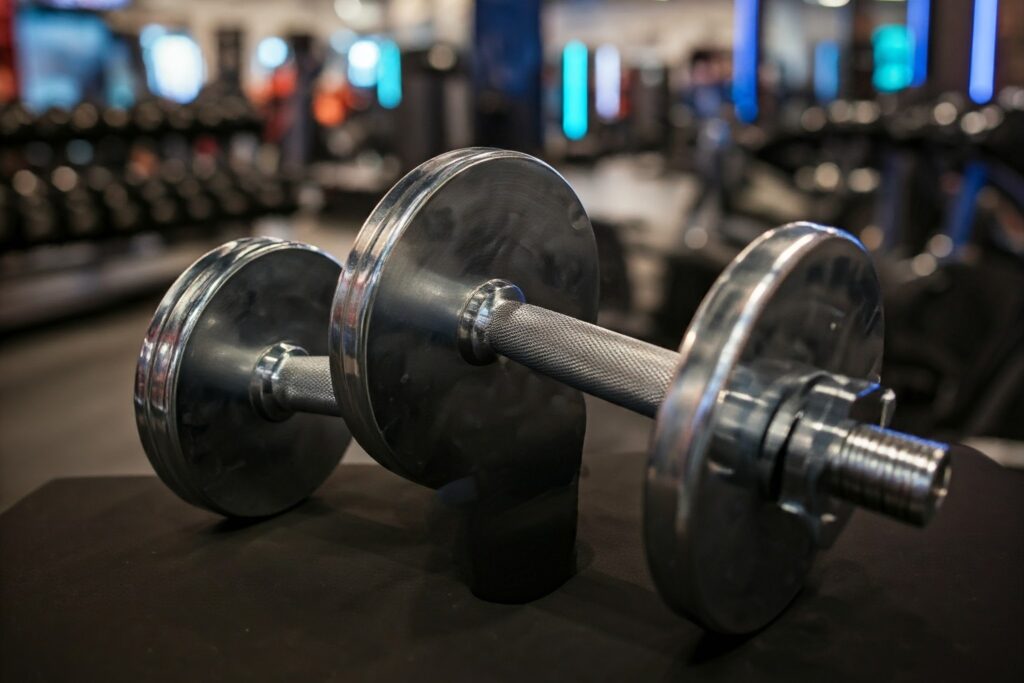Summary
Gymnasts develop their muscular physiques primarily through bodyweight and callisthenic movements, in contrast to bodybuilders who use weights. Training muscles in a lengthened position is shown to be effective for hypertrophy, and gymnasts naturally incorporate this into their routines. Elite gymnasts train over 20 hours a week, focusing on strength and conditioning, which significantly contributes to muscle growth. Additionally, strong leg muscles are essential for jumping and injury prevention, leading many gymnasts to include weight training exercises like squats and deadlifts in their programs.
People commonly ask how gymnasts get so muscular. In contrast with bodybuilders who primarily use free weights and machines for hypertrophy, gymnasts develop their size with mostly bodyweight or callisthenic movements. Although the methods of training differ, the principles between how bodybuilder and gymnasts grow muscle are the same. Let’s explore some of these principles that contribute to building gymnast’s athletic physique.
Training Muscles At Long Lengths
Current research into the science of muscle hypertrophy suggests that resistance training a muscle in its lengthened state is superior to training in a shortened state or even through full range of motion. An article reviewing the current science around exercise range of motion from Stronger By Science does an excellent job at explaining what is currently known about how range of motion affects muscle growth response. Evidence suggests training a muscle in its lengthened position is better than its shortened position, and at least as good as training full range. Although the mechanisms are not known, the emphasis is on placing a muscle under load in a lengthened or stretched position.
With this information, bodybuilders involved in the evidence based fitness community recently have been adopting training in larger ranges of motion. In particular, a large emphasis has been placed on training lengthened partials, where partial reps of a movement are performed near a muscle’s lengthened state.
Ahead of the Curve: Gymnasts and Long-ROM Training
Gymnasts particularly perform a large amount of strength and conditioning activities pushing muscles through lengthened positions. Take for example the Iron Cross. This skill places the biceps and pecs at stretched positions loaded with a large amount of mechanical tension. Accessory exercises for the Iron Cross include dips on either rings or parallel bars, which are often done with a large stretch in the bottom of the dip to place the chest muscles in that lengthened state. Similarly, swinging on events like high bar and rings place the lat muscles of the back in a stretched state at the bottom of a swing before contracting as the body closes back to a hollowed dish shape. For more information about how gymnasts might further leverage the power of training at long ranges of motion, check out our article detailing how lengthened partials can be used in gymnastics.
Volume of Training
Many gymnasts, especially elite athletes, train 20+ hours a week. Depending on the time of year, up to half of this training may be spent on physical preparation work like strength, conditioning, and mobility. With a large portion of this training focused on upper body and core, these muscle groups experience significant volume of training over the course of a week.
Although the science is complicated and more research is needed, it seems 10-20 challenging sets per muscle group per week is sufficient to produce muscle growth. These numbers are easily met or exceeded by gymnasts over the course of their training week.
Do Gymnasts Skip Leg Day?
A generalization about gymnasts is that they don’t need big or strong legs to do gymnastics. However current research has shown the importance of leg strength for jumping, landing, and injury prevention. Gymnasts potentially experience 15-18x bodyweight forces during impacts and landings. The legs are responsible for absorbing much of that force during jumping and landing, so if the leg muscles are weak, bones, tendons and ligaments take the brunt of the force. This results in ankle, knee, and especially low back injuries in gymnasts.
To counter this, many gymnasts are beginning to add weight training to their programs. Movement patterns like squats, deadlifts, lunges, and split squats all have a place in a well rounded training program. These movements are easy to progressively overload by adding weight allowing objective measurement of improvement.

